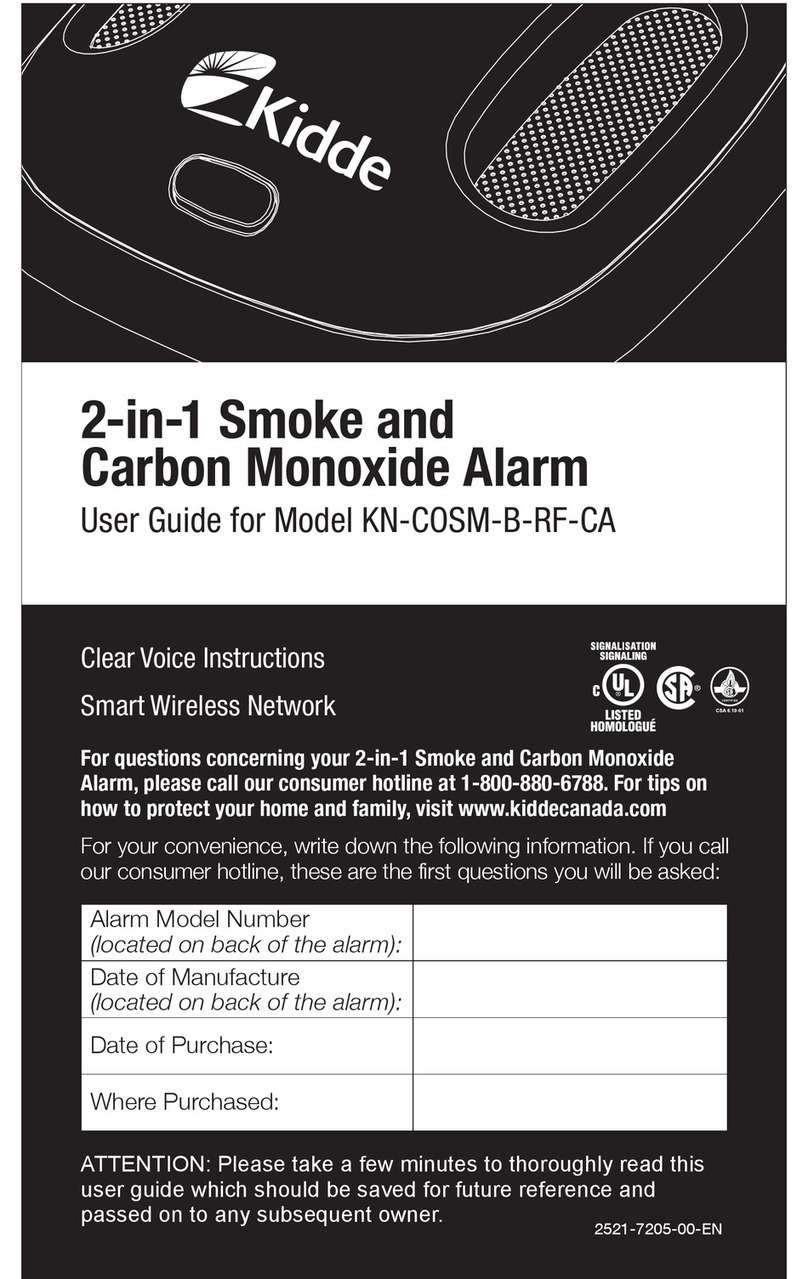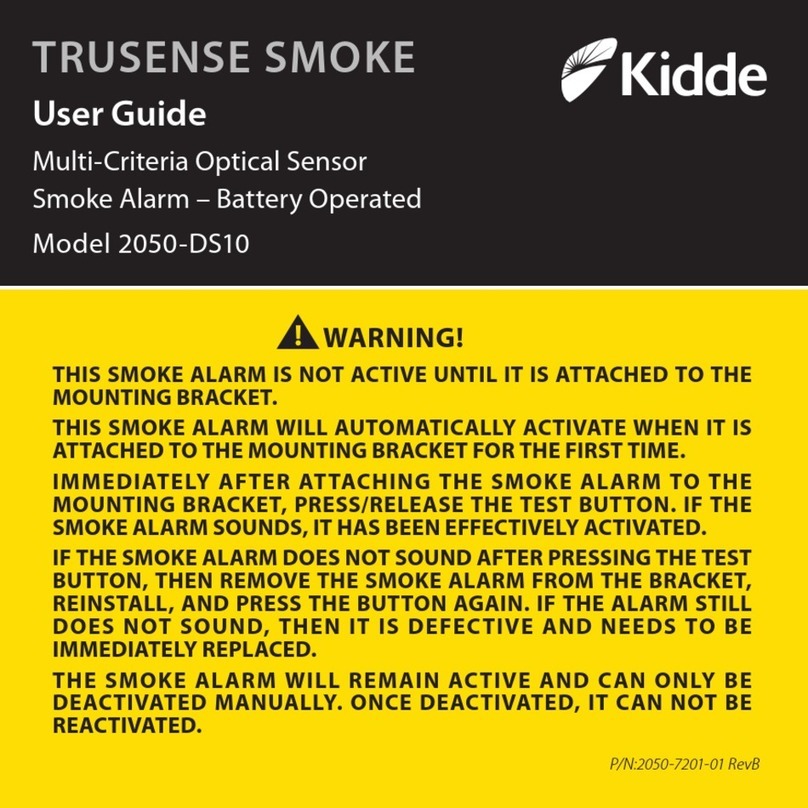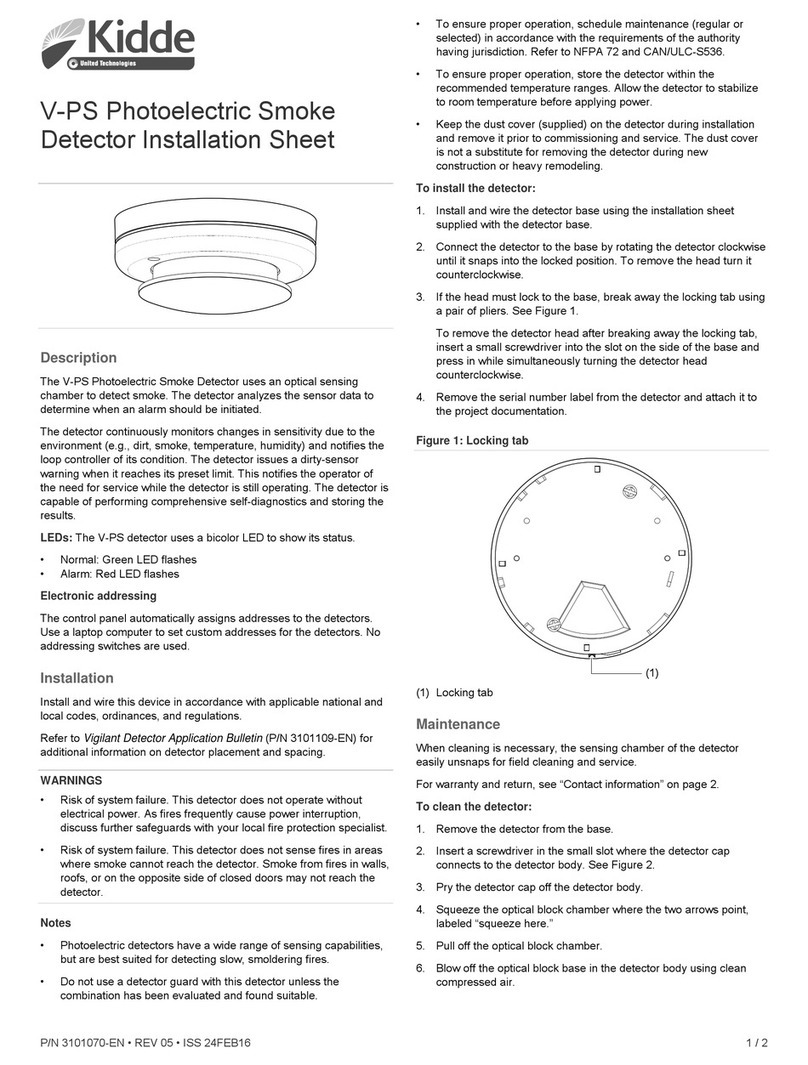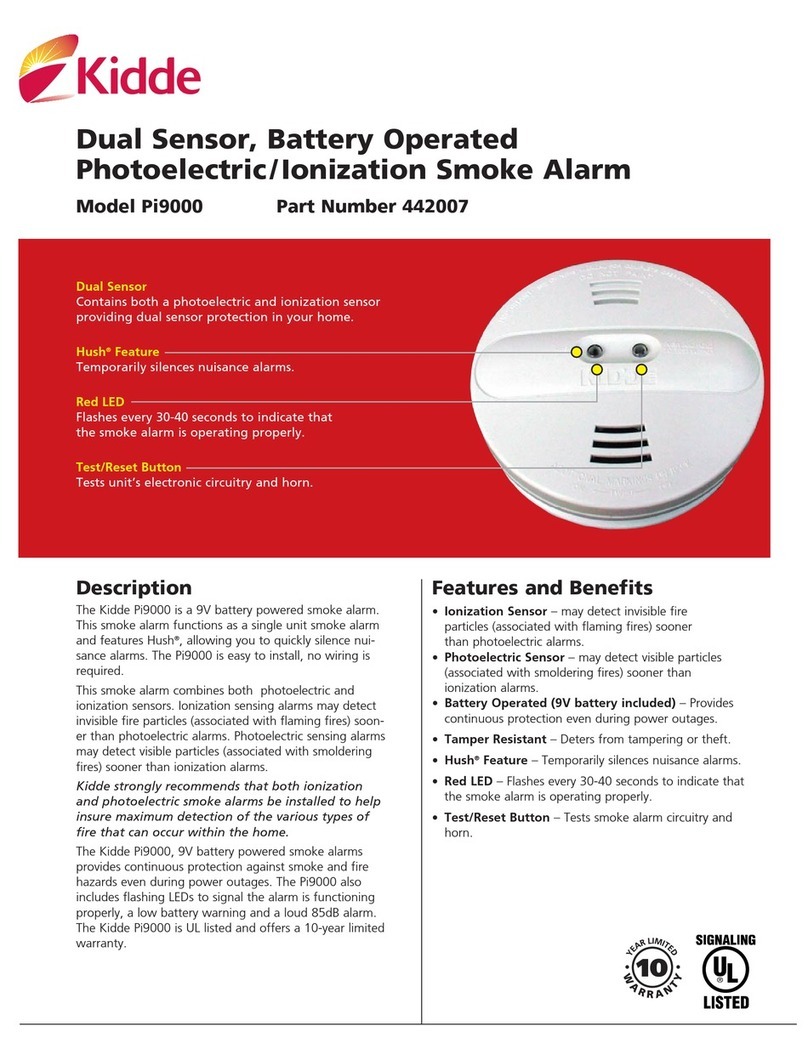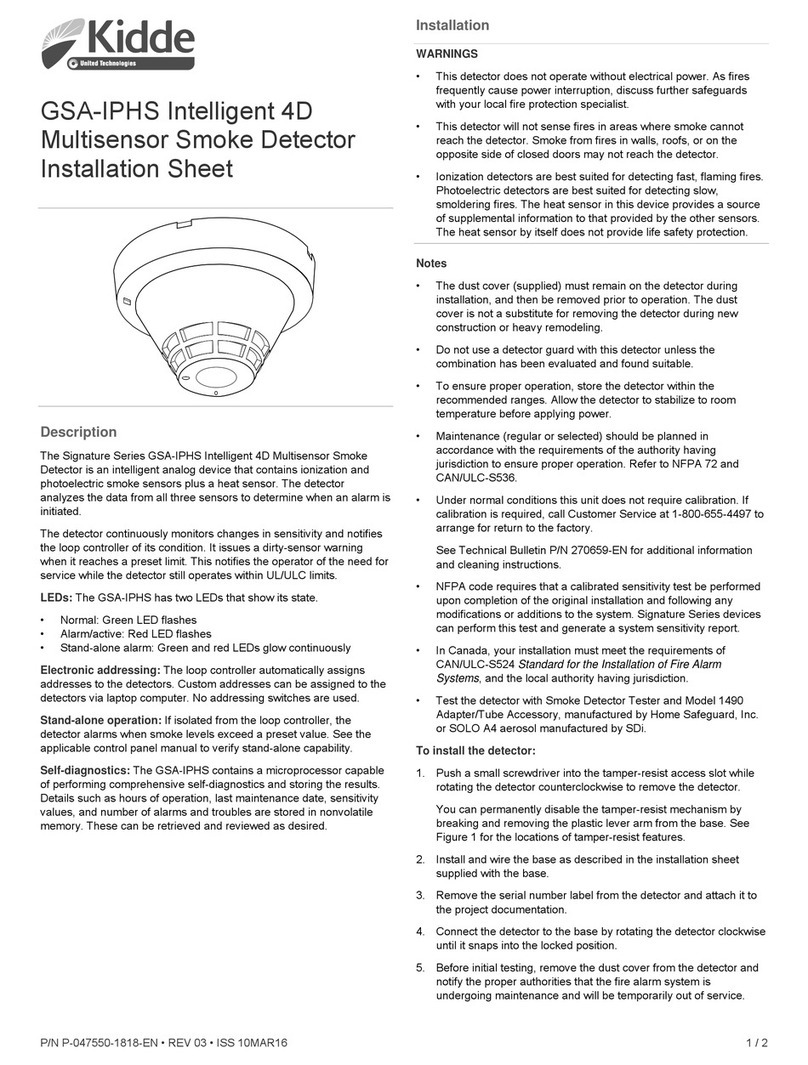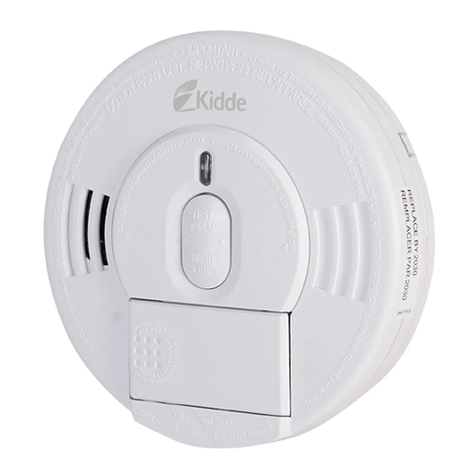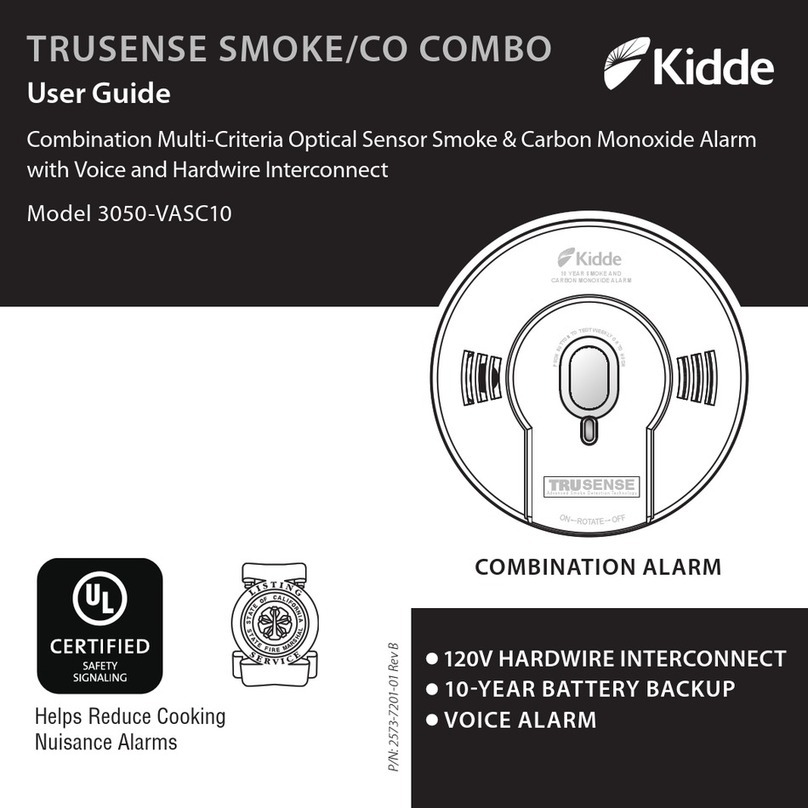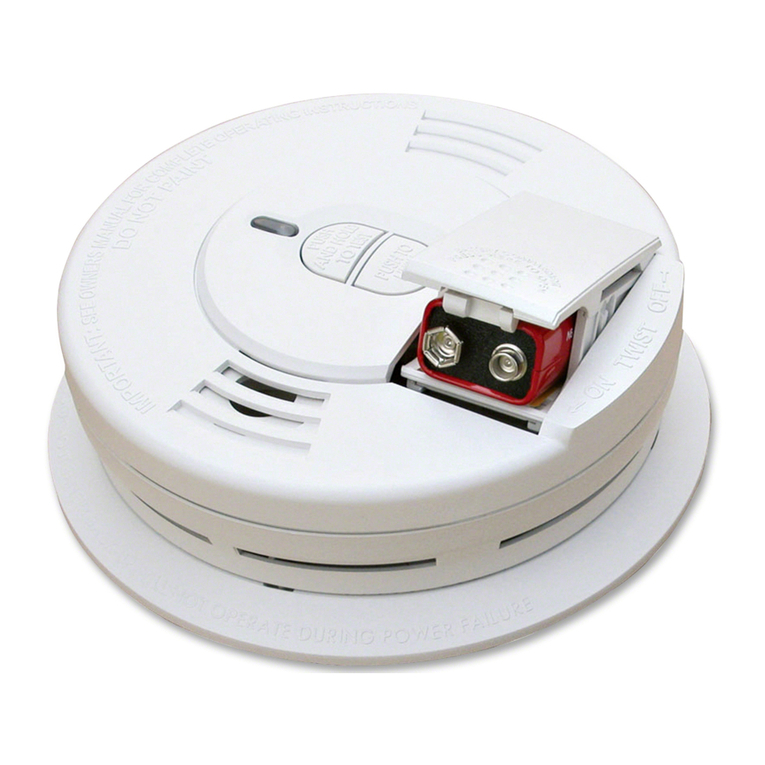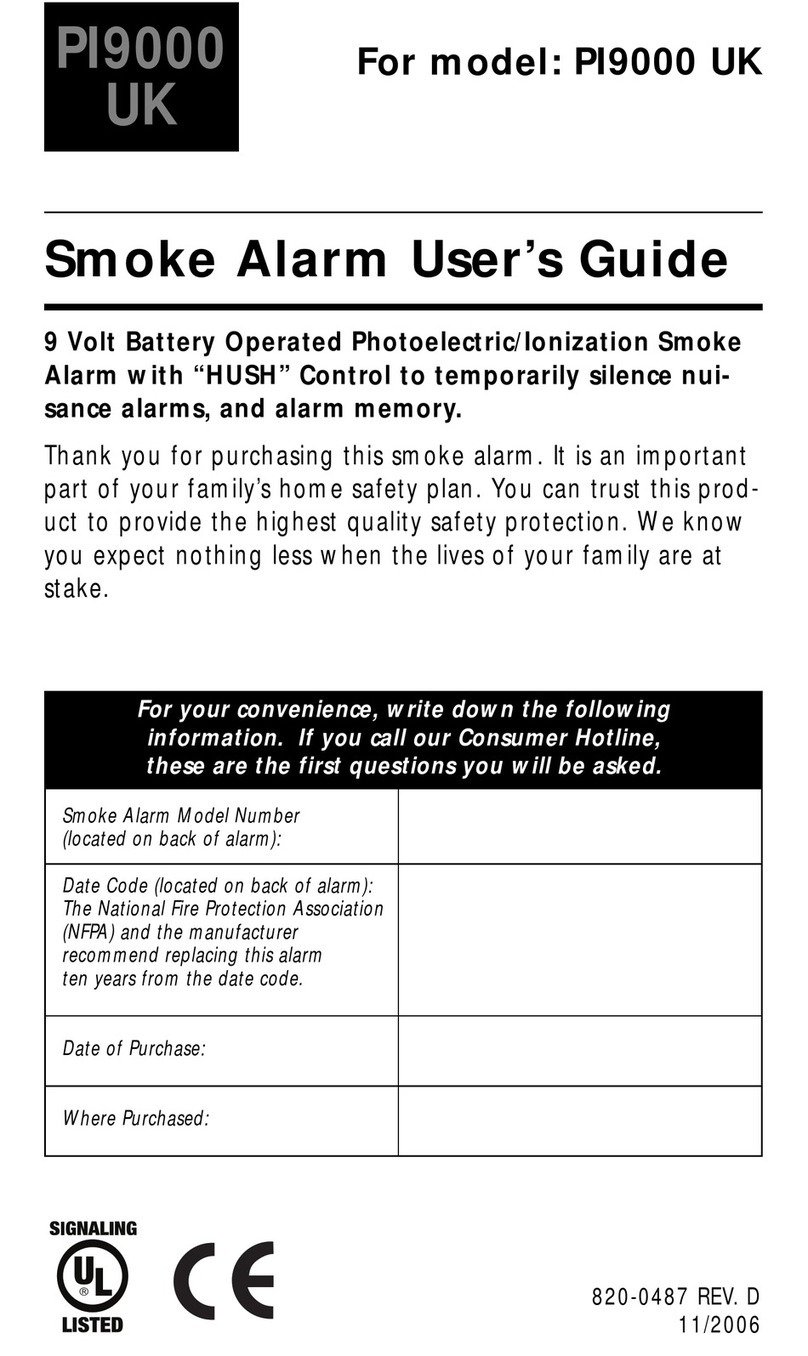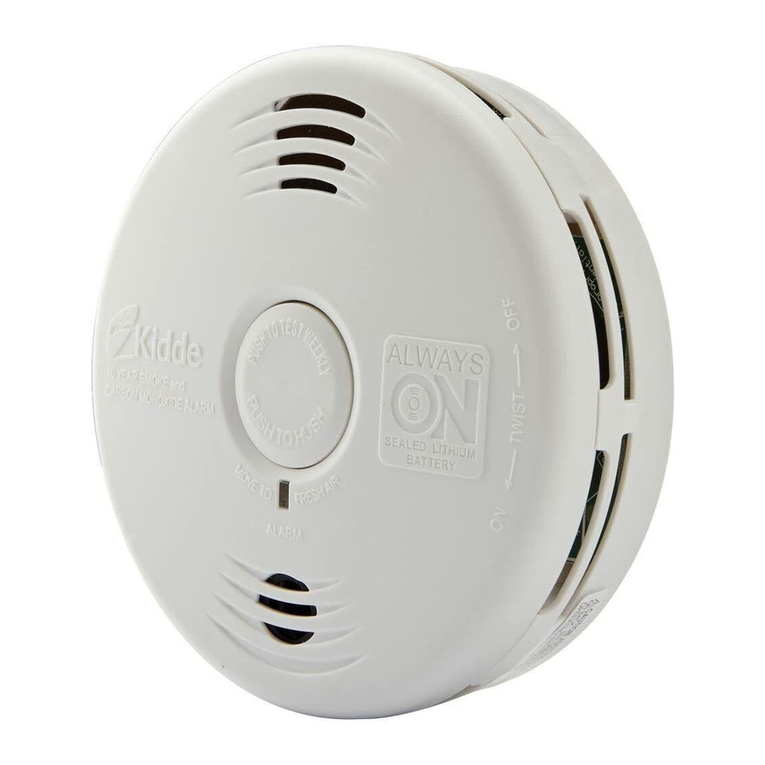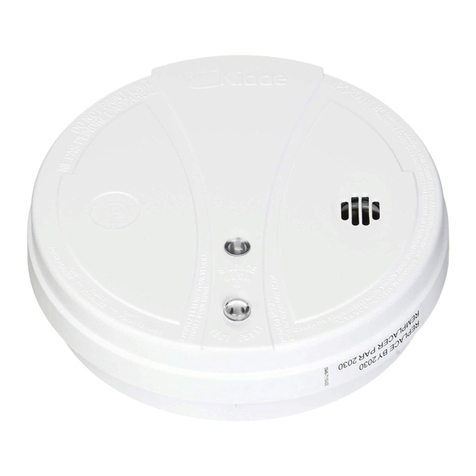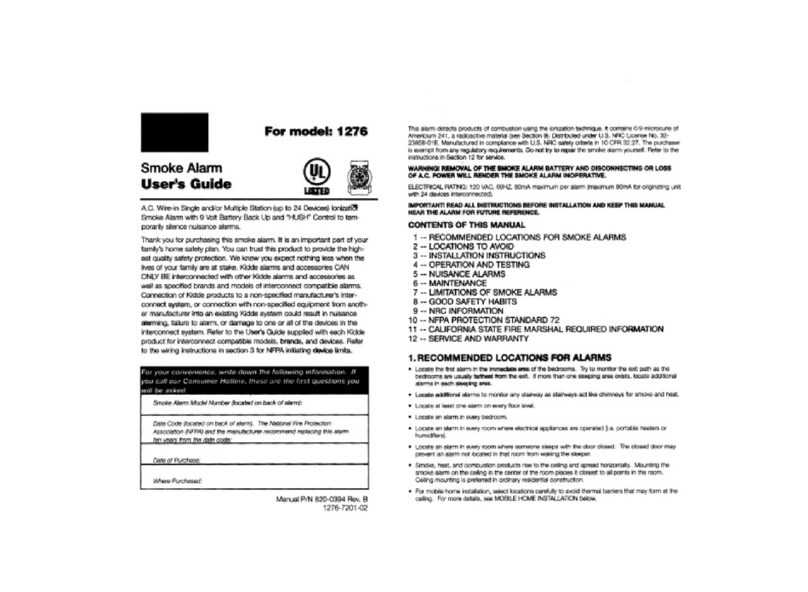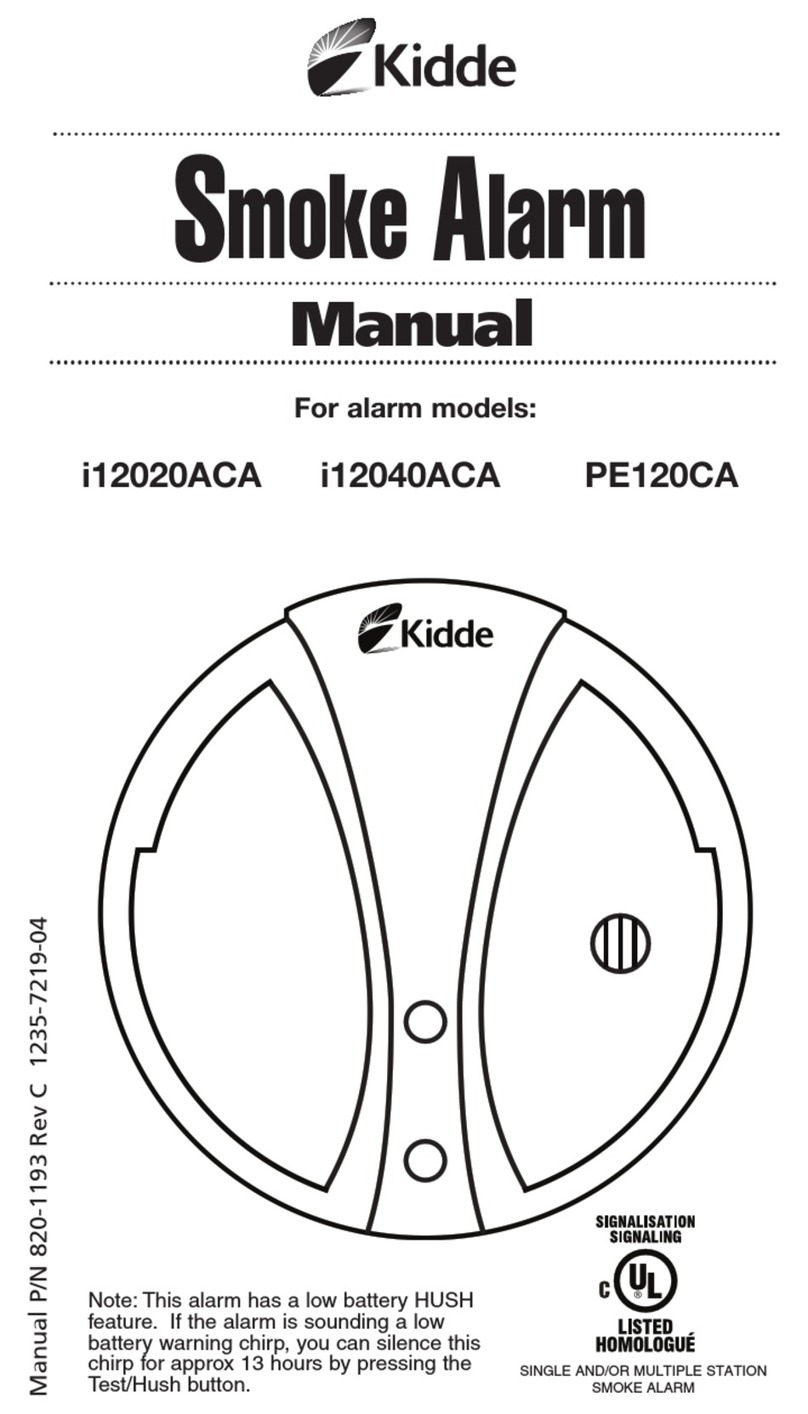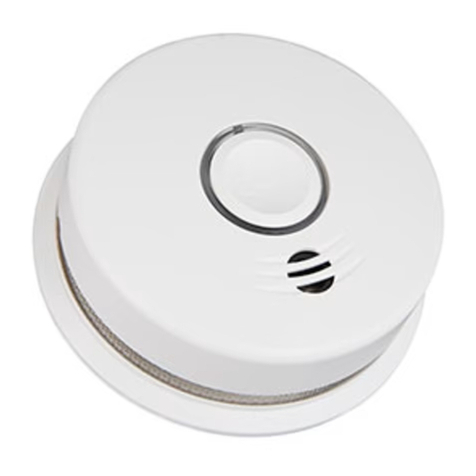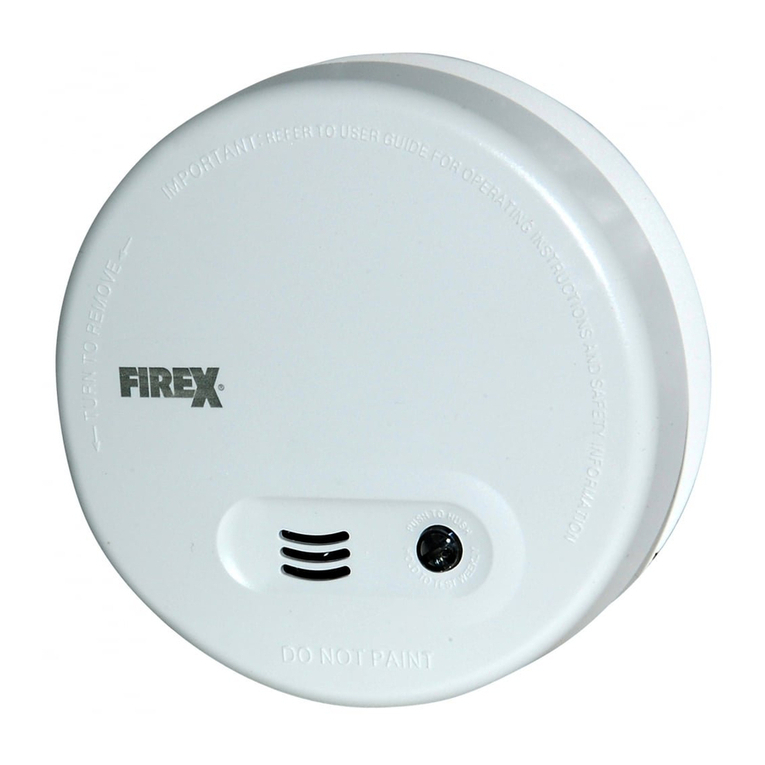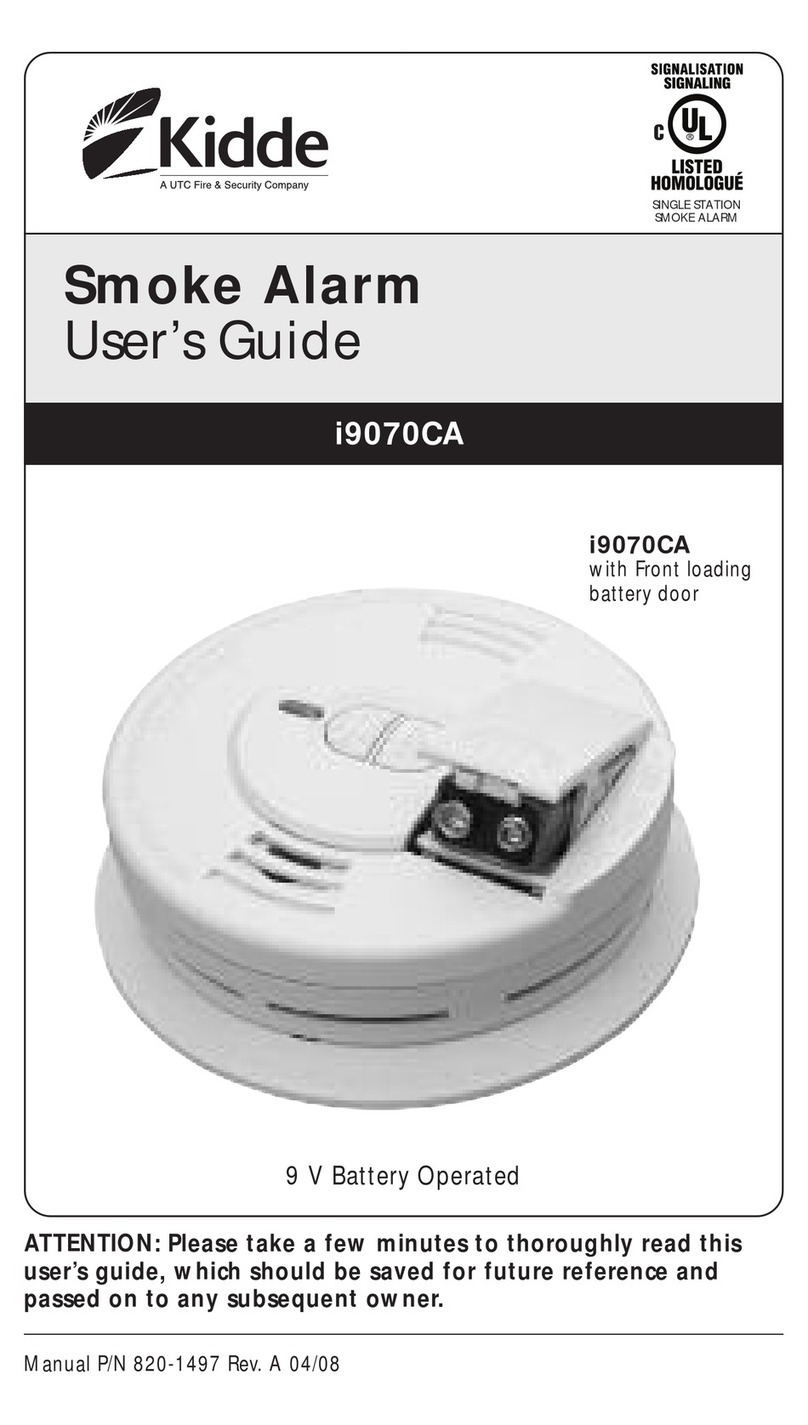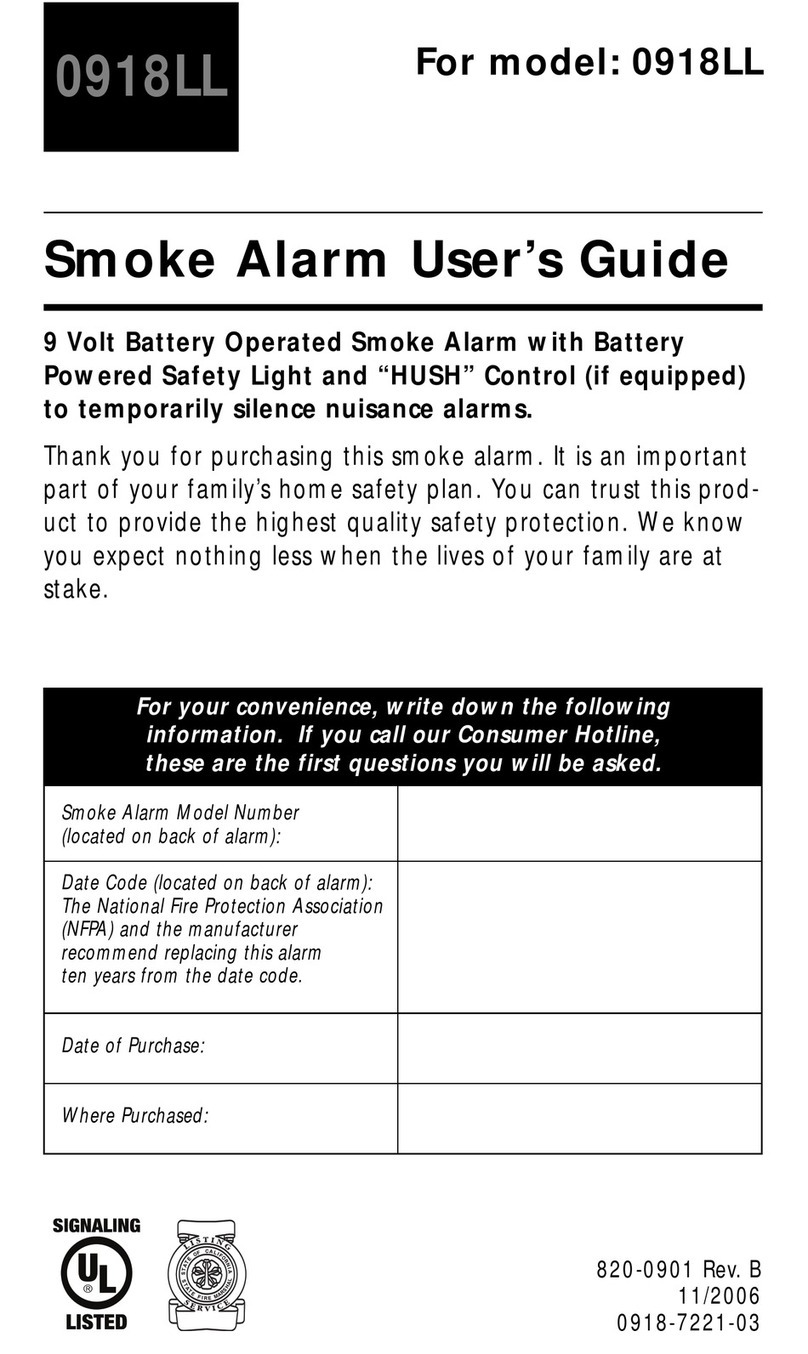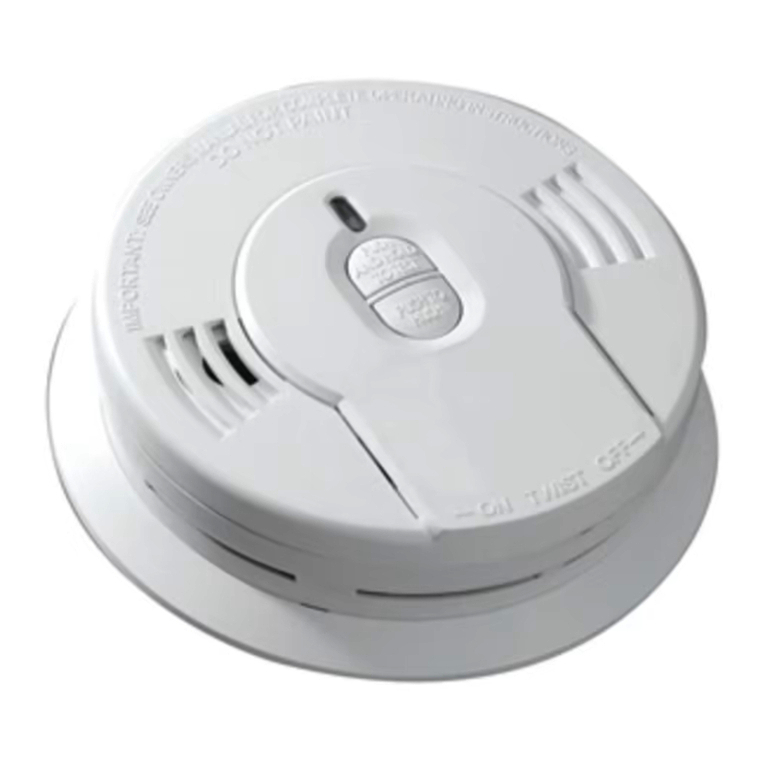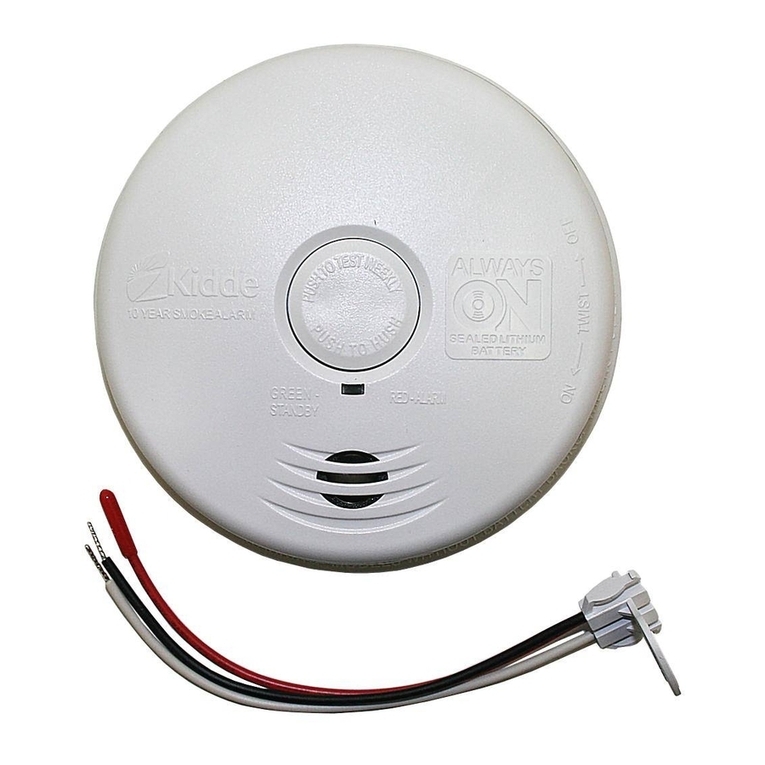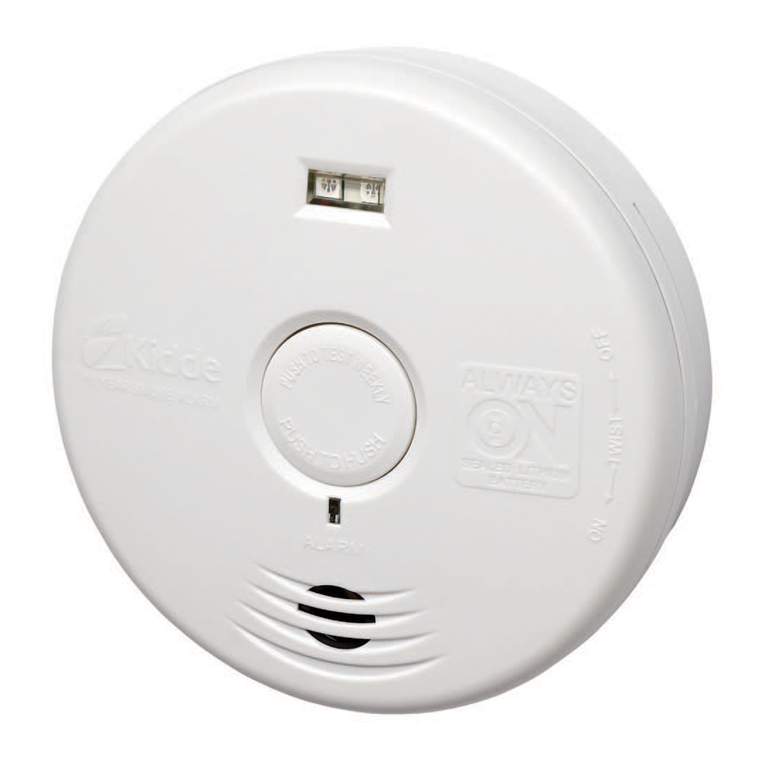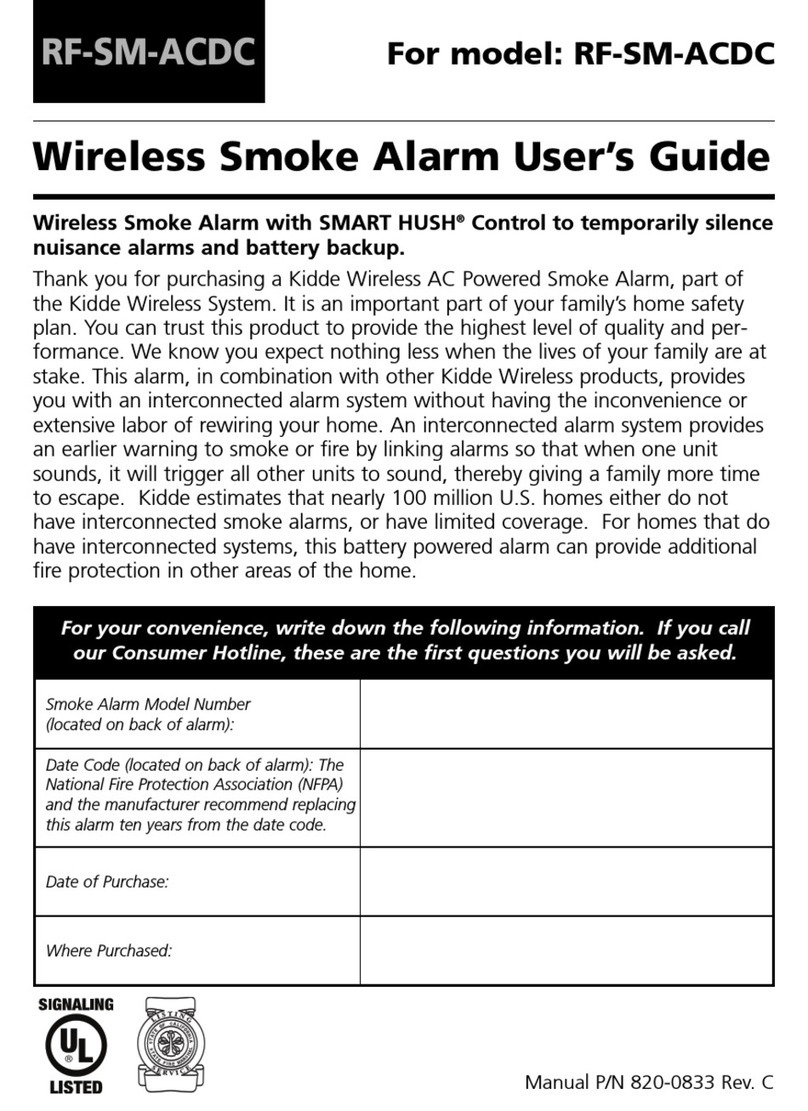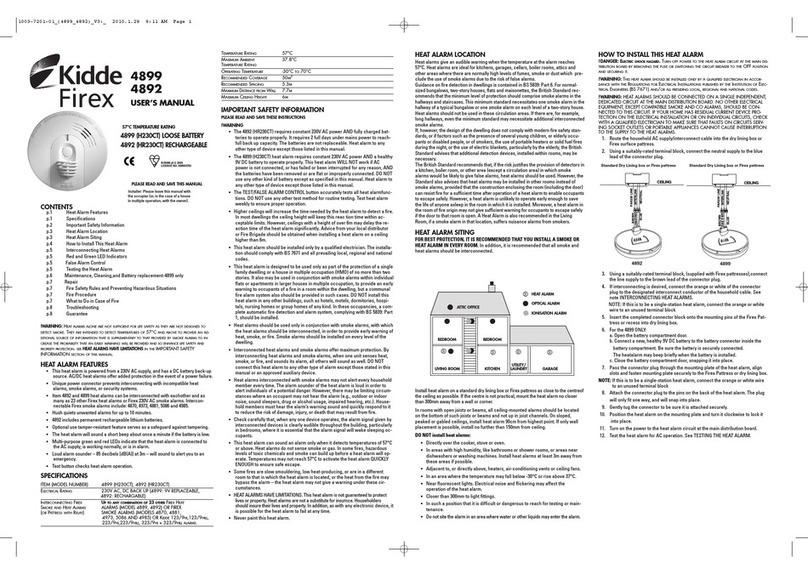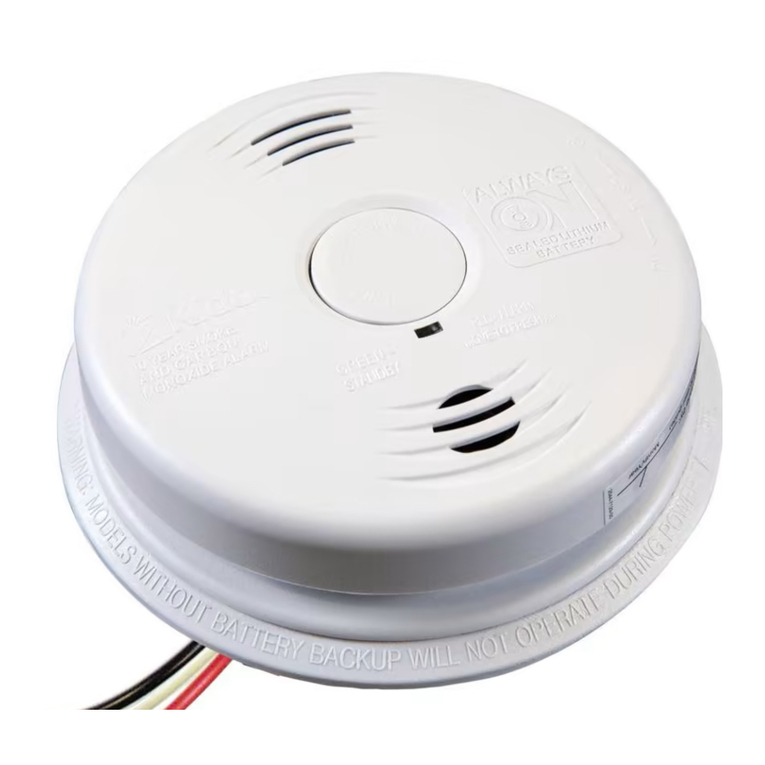WARNING: PLEASE READ CAREFULLY AND THOROUGHLY
•NFPA72states:Lifesafetyfromfireinresidentialoccupanciesisbased
primarily on early notification to occupants of the need to escape,
followed by the appropriate egress actions by those occupants.
•Firewarningsystemsfordwellingunitsarecapableofprotectingabout
half of the occupants in potentially fatal fires. Victims are often intimate
with the fire, too old or young, or physically or mentally impaired such
that they cannot escape even when warned early enough that escape
should be possible. For these people, other strategies such as protection-
in-place or assisted escape or rescue are necessary.
•Leadingauthoritiesrecommendthatbothionizationandphotoelectric
smoke alarms be installed to help ensure maximum detection of
the various types of fires that can occur within the home. Ionization
sensing alarms may detect invisible fire particles (associated with
fast flaming fires) sooner than photoelectric alarms. Photoelectric
sensing alarms may detect visible fire particles (associated with slow
smouldering fires) sooner than ionization alarms.
•Abatterypoweredalarmmusthaveabatteryofthespecifiedtype,
in good condition and installed properly. This model is AC powered
with a sealed backup battery.
•Smokealarmsmustbetestedregularlytomakesurethebatteryand
the alarm circuits are in good operating condition.
•Smokealarmscannotprovideanalarmifsmokedoesnotreach
the alarm. Therefore, smoke alarms may not sense fires starting in
chimneys, walls, on roofs, on the other side of a closed door or on a
different floor.
•Ifthealarmislocatedoutsidethebedroomoronadifferentfloor,it
may not wake up a sound sleeper.
•Theuseofalcoholordrugsmayalsoimpairone’sabilitytohearthe
smoke alarm. For maximum protection, a smoke alarm should be
installed in each sleeping area on every level of a home.
•Althoughsmokealarmscanhelpsavelivesbyprovidinganearly
warning of a fire, they are not a substitute for an insurance policy.
Home owners, landlords and tenants should have adequate insurance
to protect their lives and property.
3. Limitations of Smoke Alarms
